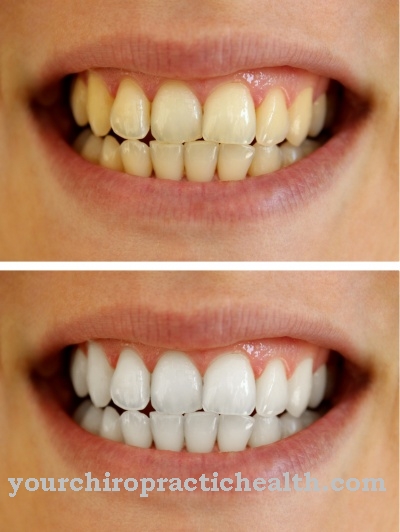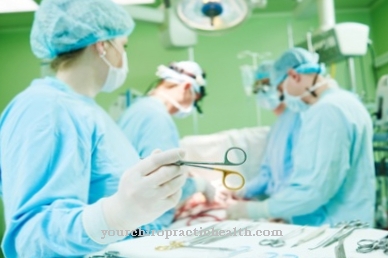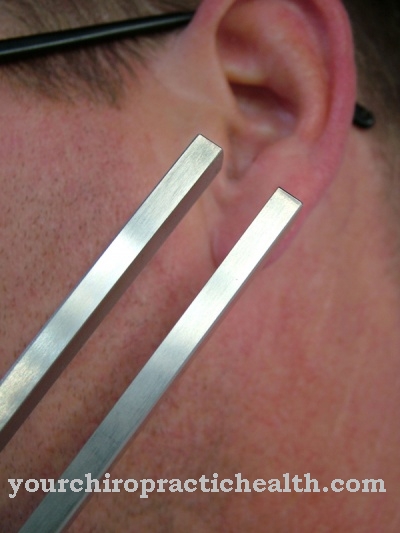The Spagyric represents an ancient natural healing method, which was founded by Paracelsus. The remedies produced in this procedure are said to activate the body's self-healing powers. Various methods of making spagyric drugs have been developed, all of which are very different from one another.
What is spagyric?

Spagyric is a natural healing process that can be described as the pharmaceutical and therapeutic implementation of alchemy. It works on the principle of "separate and unite".
With the help of chemical processes, plant and animal extracts are first mixed with water, fermented with yeast, distilled, calcined and later brought together again. Plants and herbs are mostly used today. After digestion and fermentation, the substances are first separated by distillation. According to the definition of spagyric, this corresponds to the separation between body, mind and soul. The biological residue is calcined (heated and ashed). Distillation is considered to be the most important step in the preparation of the spagyrika, which has to be carried out several times in order to rid the high-quality extracts of toxins.
The spagyric is attributed to the Swiss doctor Theophrastus von Hohenheim (1493–1541), also known as Paracelsus. He saw it as a practical application of alchemy for the manufacture of medicines. For Paracelsus, even alchemy and spagyric were one and the same. The alchemical philosophy was based on the ideas of the Entien (influences on the body), the four basic elements (fire, water, earth and air) and other ideas of the philosophy of that time.
Function, effect & goals
However, the remedies obtained in the context of spagyric showed healing effects when used. They are still made today according to the same principles of separation and merging. Body, mind and soul are first separated, cleaned and brought together again.
The separation of the biological substance, its purification and its combination should also function according to this principle. In the course of time, several spagyric healing systems were developed based on this principle, which were carried out on the basis of different methods of separation and reunification. Today the healing system according to Dr. Zimpel favors. The Silesian engineer Dr. Zimpel, who lived from 1801 to 1879, considered distillation to be the most important production step and was of the opinion that constant distillation processes would increase the effectiveness of the remedies.
The initially macerated and yeast-fermented substance is subjected to multiple distillation and the vegetable residue is heated and incinerated in the process. This process is known as calcination. After completing this procedure, the calcined residue is treated with distilled water so that excess salts are dissolved out. Then the dried ash is brought back together with the distillate. The composition of the medicinal product produced depends on the biological material selected at the outset and the method of production. Mixtures of plants, individual plants and additions of other biological materials can be selected. Extracts containing fragrant active ingredients are often produced.
Based on the method of Dr. Zimpel further modified methods were introduced in the 20th and 21st centuries, which can be traced back to other well-known spagyrians such as Johann Conrad Glückselig, Alexander von Bernus, Walter Strathmeyer and Frater Albertus. Several well-known manufacturers now produce spagyric drugs using different methods. The manufacturing processes used show very large differences. Six of these procedures are listed as standardized procedures in the homeopathic textbook. The medicinal products produced by these processes are legally regarded as homeopathic medicinal products. Strict requirements apply to their manufacture and they may only be placed on the market with official approval.
The use of spagyric drugs should only ever be a supplement to conventional medical treatments or other natural healing methods. The main thing is to activate the self-healing powers. According to the spagyricists, the tinctures that are created during production should be even more medicinal than the starting materials. In their opinion, the effect of drugs is based on the programmed laws of life. Spagyric drugs are offered in the form of drops, ointments, creams, sprays, tablets, individual preparations or complex agents.
Risks, side effects & dangers
The spagyric drugs are used for a wide variety of diseases and symptoms. A scientific proof of the effectiveness of the means has not yet been provided.
Often, however, astonishing effects occur, which are usually only to a small extent due to the active ingredients contained in certain plants and, in particular, perhaps to placebo effects. If complaints occur, the doctor should of course always be consulted first to clarify the cause of the disease. Self-medication of serious illnesses with spagyric drugs alone can have fatal consequences. However, spagyric drugs have no side effects. But they are ineffective for serious illnesses. Those who only rely on the effects of the spagyric drugs cannot develop sufficient self-healing powers in these cases.
However, the additional medication can help heal faster. One difficulty in explaining the mode of action of spagyric drugs is that there are many different manufacturing processes that do not allow a uniform standard. The production is not based on a scientific, but on a mystical basis. Their effectiveness is still explained on the basis of the old philosophical ideas of alchemy, which also include astrological aspects.
The positive health effects can usually not be explained by the active ingredient content in these agents, because their concentration is very low. The self-healing powers are probably strongly activated by believing in healing.
















.jpg)
.jpg)



.jpg)






